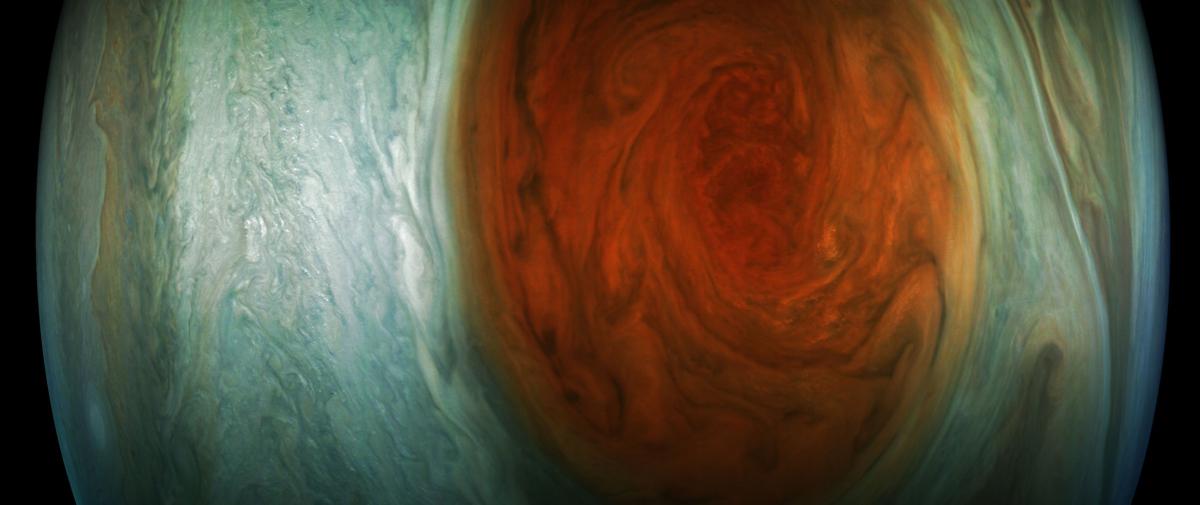The camera on board NASA’s Juno mission captured close-up images of Jupiter’s Great Red Spot during a flyby on Monday night.
“For hundreds of years, scientists have been observing, wondering and theorizing about Jupiter’s Great Red Spot,” said Scott Bolton, principal investigator for the Juno mission, in a statement released by NASA. “Now we have the best pictures ever of this iconic storm.”
Juno was 5,600 miles above the clouds when it aimed its camera at the massive cyclone, 1ƒ times the diameter of Earth.
Citizen scientists helped process the raw images taken by the spacecraft.
Additional data was collected by a suite of science instruments onboard and will ultimately provide insight into the past, present and future of the gigantic storm, according to Bolton.
That will help scientists understand the composition and structure of Jupiter, the activity beneath the thick layers of clouds and the powerful magnetic and gravitational fields.
The Juno mission team includes William Hubbard, professor emeritus at the University of Arizona Lunar and Planetary Laboratory.
Hubbard is a co-investigator on the Juno mission, responsible for interpreting information gathered about Jupiter’s magnetic and gravitational fields.
Hubbard has spent his career studying the structure and evolution of Jupiter, Saturn and gaseous planets around other stars.
Juno swings around for another close encounter with the largest planet in the solar system on Sept. 1.





